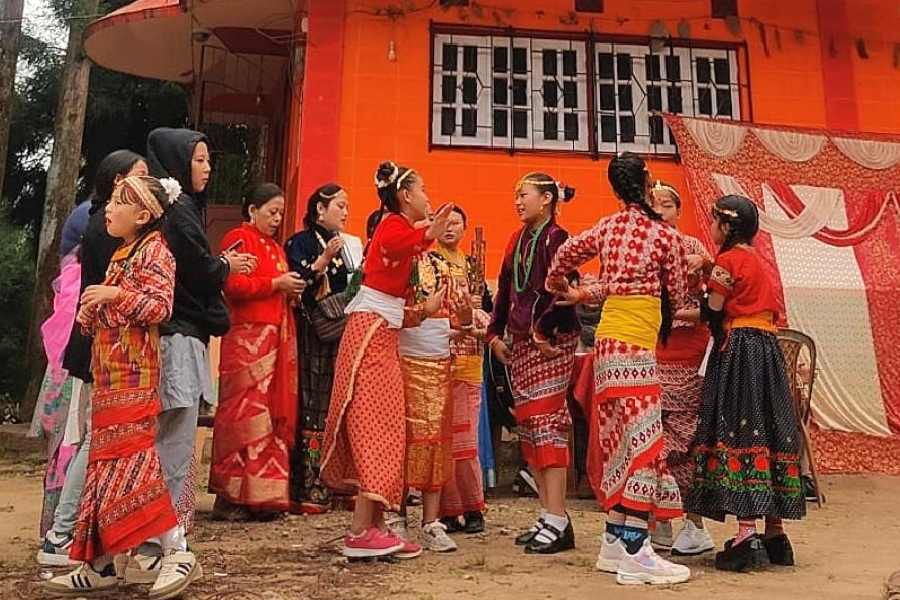This may be the age of AI and smartphones. But age-old Tihar celebrations across Darjeeling hills — live on among the youth.
The five-day Tihar festivities of the Gorkha community will come to an end on Sunday with women celebrating Bhai Tika with their brothers.
“The younger generation shows great interest in Tihar and the traditions attached with it, a very good sign for the community,” said Dewraj Chhetri, an elderly Gorkha resident of Toongsoong, Darjeeling.
The festival starts by feeding crows on Kag (crow) Tihar, which is followed by Kukur (Dog) Tihar the next day when dogs are garlanded and fed to their fill.
While scriptures and folklore portray the crow as a messenger of Yamraj, the god of death, dogs are believed to have the power to feel the presence of Yamraj's emissaries.
However, the actual fanfare begins on Day Three, when Lakshmi, the goddess of wealth, is worshipped. The day, coincidentally Diwali for the rest of the country, is marked by the preparation of the sel roti (a Gorkha delicacy). Cows, considered the incarnation of the goddess, are worshipped, fed and garlanded in the morning. Family customs and pujas are held in the evenings.
In the evening, bhailo singers take centrestage. Bhailo — traditional songs or blessings in verse — are sung only by women, dressed in traditional attire, who visit every home. The households, in turn, offer them money.
“We had far more bhailo groups visiting our house this year. Many young girls were accompanied by elders. The younger generation seems to be showing more interest in our traditions,” said Dewraj.
The fourth day of the festival, which fell on Saturday this year, is devoted to worshipping the bull on Goru Puja. On this day, men perform the deusi, where they visit the houses in their neighbourhood, singing traditional songs.
“Young boys are actively taking part in deusi,” smiled Rajen Pradhan, another resident.
Legend has it that King Bali, a mythological character, having lost his entire kingdom to Lord Vishnu, sought God’s permission to visit his erstwhile kingdom once a year on this day.
On Sunday, Gorkha families will observe Bhai Tika. Women will start the ceremony by walking in circles thrice around the brothers. As they walk, they will wet their circular path with water from a kalash or vessel, drawing an invisible magic circle to ward off their brothers' deaths.
“The water boundary signifies protection from death,” said Dewraj.
“Thereafter, a walnut, supposed to symbolise the head of Yamraj, is cracked by the sister to protect the brother’s life from doom,” he added.
After the main ceremony, a colourful tika is applied on the forehead of the brothers by the sisters, followed by a traditional feast. The brothers present gifts to sisters, ending the Bhai Tika celebrations.
Newars, a sub-community of the Gorkhas, have a different way of celebrating Bhai Tika.
The Newar sisters put up mandaps of different colours for each brother. The mandaps are decorated elaborately, complete with rangolis and garlands. After the sisters apply colourful tikas on the foreheads of each brother, they offer a curd-based drink to the brothers. A traditional dish prepared from ginger, garlic, soybean, eggs and dry prawns called samaibaji is then served.
Tihar celebrations may end with Bhai Tika, but functions which often host musical soirees continue for a fortnight.










